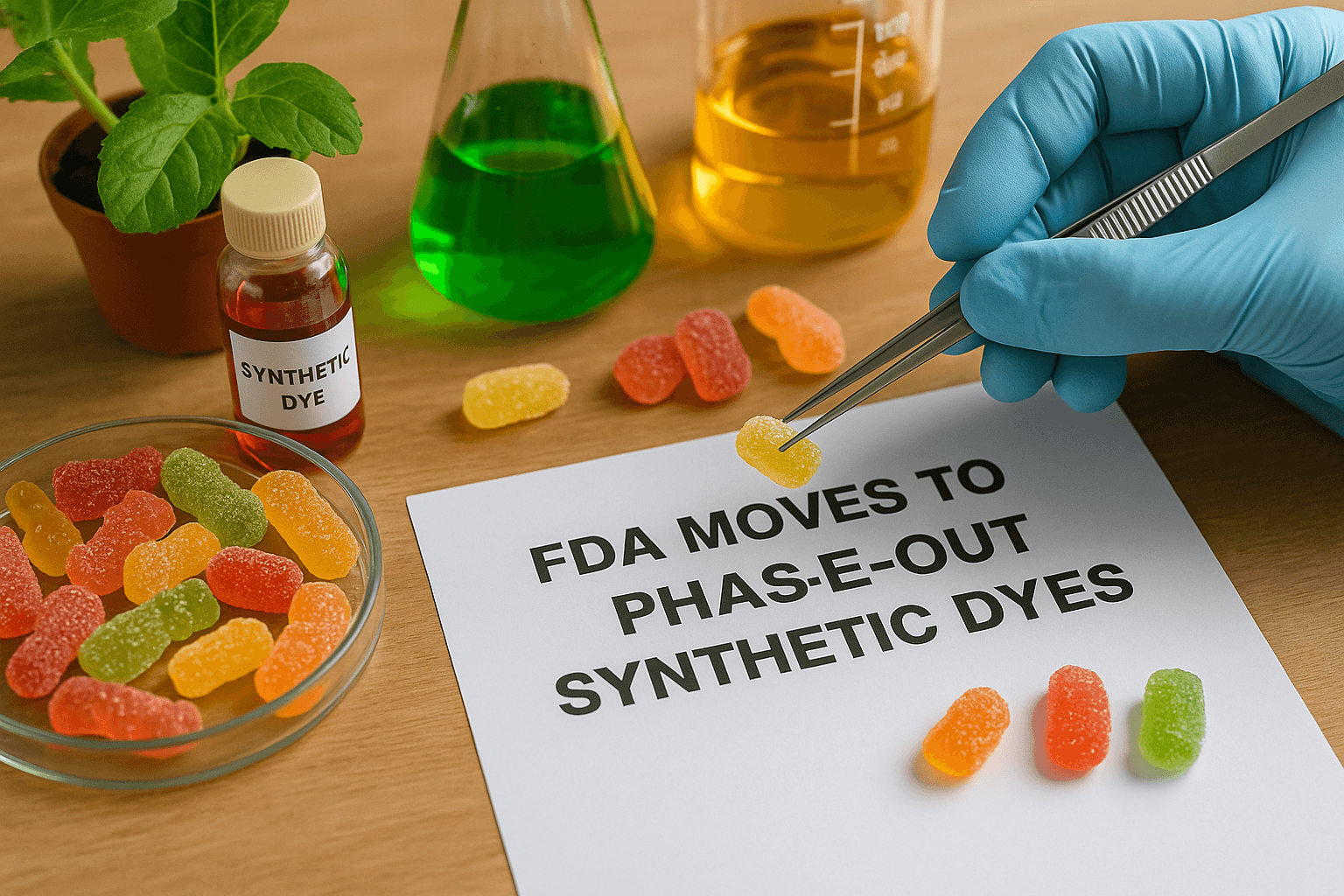The Red Dye Ban Every Retailer Saw Coming (But Most Ignored)
The FDA's Red Dye No. 3 ban wasn't a surprise—it was inevitable. We've been telling clients for two years that synthetic dyes were living on borrowed time. Yet here we are in 2025, and most retailers are scrambling to reformulate products they should have been working on since 2023. The smart ones are already done and moving into premium positioning.
Why This Matters Now
When the FDA announced the January 2027 deadline for Red Dye No. 3 elimination, the writing had been on the wall for years. California banned it. The EU restricted it. Consumer advocacy groups had been pushing for removal since 2019. We saw this coming because we watch regulatory patterns, not just individual decisions.
What most retailers missed is that this isn't just about compliance—it's about getting ahead of a trend that's been building for years. The retailers we work with who started reformulating in 2023 are now positioned to capture market share while competitors struggle with last-minute changes.
What We're Seeing Across Our Client Base
The response to the Red Dye No. 3 ban has been telling. We're seeing retailers fall into three categories:
The Prepared (About 20%): These retailers saw the regulatory trend and began reformulating proactively. They're using this as a marketing opportunity, launching "ahead of the curve" clean label positioning. Their reformulated products are already on shelves, and they're capturing consumers who want to avoid synthetic dyes regardless of the ban.
The Reactive (About 60%): Most retailers are scrambling now. They're dealing with compressed timelines, limited supplier capacity, and higher ingredient costs because everyone needs natural alternatives at once. Their teams are stressed, costs are inflated, and they're missing the marketing opportunity.
The Deniers (About 20%): Some retailers are still hoping for deadline extensions or exemptions. This is dangerous thinking. The FDA doesn't reverse course on safety-based decisions, especially when the Delaney Clause is involved.
Our Take: Turn Compliance Into Competitive Advantage
Here's what the prepared retailers understood that others missed: regulatory compliance isn't a cost center—it's a competitive moat. When you're forced to reformulate anyway, why not use it to differentiate?
Natural colorants aren't just alternatives—they're upgrades. Consumers increasingly associate natural colors with better nutrition and quality. The retailers positioning this as improvement rather than compliance are seeing premium pricing opportunities and stronger brand perception.
Speed matters more than perfection. We've seen retailers spend months optimizing formulations to match the exact shade of synthetic red. Meanwhile, competitors launch with "close enough" natural alternatives and capture market share. Perfect is the enemy of good when you're racing against a compliance deadline.
Supply chain relationships determine success. The retailers succeeding now are those who built relationships with natural colorant suppliers years ago. Waiting until 2025 to source ingredients means dealing with allocation systems and premium pricing.
Strategic Implications for Leadership
This situation reveals broader strategic insights about regulatory preparedness:
Regulatory foresight pays. The retailers who invested in trend monitoring and proactive compliance avoided crisis mode entirely. They're now using this disruption to their advantage while competitors struggle.
Clean label is table stakes, not differentiation. The Red Dye No. 3 ban accelerates a trend that was already happening. Retailers treating this as a one-off compliance issue are missing the bigger picture—synthetic ingredients are becoming liability faster than assets.
Crisis reveals competitive positioning. How retailers respond to this deadline tells you everything about their operational sophistication and strategic thinking. Boards should pay attention to which teams saw this coming and which are scrambling.
Action Framework: What to Do Right Now
If you're behind on Red Dye No. 3 reformulation, here's the fastest path forward:
Week 1-2: Portfolio Triage
Identify every SKU containing Red Dye No. 3. Prioritize high-volume products and anything targeting children. These categories face the most consumer scrutiny and competitive pressure.
Week 3-4: Supplier Engagement
Contact natural colorant suppliers immediately. Don't wait for perfect specifications—get in their allocation systems now. Beet juice, pomegranate extract, and spirulina are proven alternatives with established supply chains.
Month 2: Rapid Prototyping
Focus on "good enough" rather than "perfect match." Consumers understand that natural colors look different—lean into that authenticity rather than fighting it.
Month 3: Market Launch
Launch reformulated products with marketing that emphasizes being ahead of the regulatory curve. Position as "naturally colored" rather than "compliant with upcoming regulations."
What's Coming Next
The Red Dye No. 3 ban is just the beginning. We're tracking similar regulatory momentum around:
- Titanium dioxide (already banned in the EU, under review in the US)
- High fructose corn syrup (facing increasing state-level scrutiny)
- Artificial preservatives (BHT, TBHQ getting consumer pushback)
The retailers building systematic approaches to regulatory anticipation won't be caught off-guard by the next ban. They'll be ready to turn disruption into opportunity while competitors scramble.
Smart retailers don't just comply with regulations—they use regulatory shifts to strengthen their competitive position. The Red Dye No. 3 ban separated the strategic thinkers from the reactive operators. Which category does your organization fall into?
Ready to get ahead of the next regulatory shift? Let's talk about building systematic regulatory foresight →

